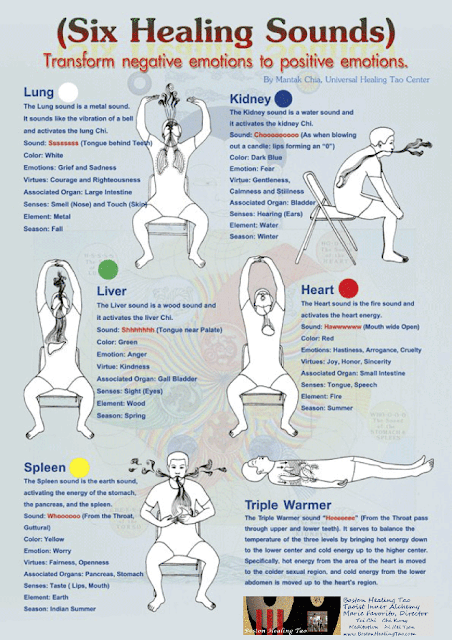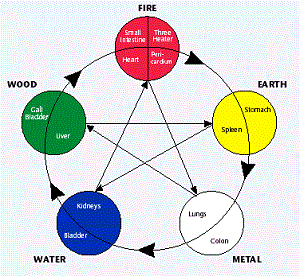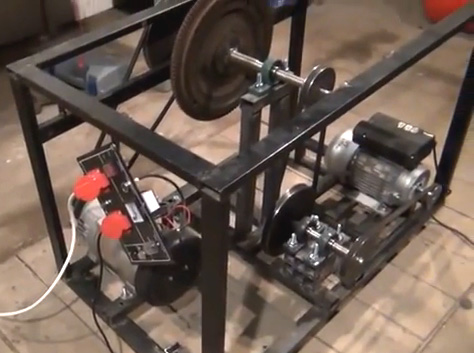Sound therapy by Peter Hess and Chinese Medicine
RELAX WITH SOUND - Peter Hess® Method
How to use sound therapy - Our guaranteed suppliers go the additional mile to convey one of a kind loosening up encounters.
The worldwide Peter Hess preparing network is more than 15,000 in number and has been in persistent advancement since the 1980s. The gear is second to none. The technique is reliably generally welcomed and has been tried and refreshed for more than 30 years. The procedures mix antiquated and present day learning, giving a steady system through which we can present with certainty.
Territories of Application how to use sound therapy
By and large - how to use sound therapy The Peter Hess technique for sound-rub is connected basically for profound unwinding. We don't make cases of fix or treatment, wanting to see it as a steady methodology. We don't have to search for what's "wrong" with the beneficiary, since we're not there to "settle" them. Rather we go for positive sentiments, wellbeing, and tranquil rest. The capacity to give up into unwinding is enter in the experience of wellbeing, and in this manner by offering unwinding sessions we can enable individuals to bring body, psyche, and soul into concordance.
- Individual or Private Use
- Unwinding and prosperity. Utilized for self-care and with family or companions.
- Professional Applications
Health and Coaching: Sound back rub is an appreciated expansion to any training where unwinding or center is wanted.
Beauty care products: Calm, certainty, and prosperity influence one's appearance. Sound back rub upgrades magnificence that originates from inside.
What is sound therapy healing
Back rub and Physiotherapy: Sound Massage can be connected by experts for intense physical protestations – customers think that its both delicate and pleasant. Blockages can be conveyed to mindfulness, and interrelated occasions that caused indications can be recognized.
Drug: By method for its unwinding and agony calming impact, sound back rub bolsters therapeutic treatment for conditions, for example, harmed plates, stomach, stomach related, and heart issues, agonizing joints and terrible course, and additionally numerous other wellbeing concerns. It can make a casual, open and co-agent air for the specialist persistent relationship.
Treatment/Psychotherapy - Sound therapy healing : Sound back rub has turned out to be a brilliant technique to loosen up customers rapidly and profoundly. From inside this profound unwinding, the restorative procedure is improved.
Other Professional Areas: Obstetrics, kid care, schools, habit recuperation, retirement/nursing homes, care for the crippled, language training, palliative and hospice care, and so on.
Corporate Settings - sound therapy healing
Staff: Introducing quiet into high-vitality or distressing condition to expand staff fulfillment and profitability. Sound projects are modified and accessible for people and gatherings.
The board: Hard-working leaders can make a stride back and reboot with a sound back rub or contemplation. Self-coordinated or supplier encouraged, in view of requirements.
Modern pioneer of the ancient art of sound massage
Peter Hess, a German engineer, is the modern pioneer of the ancient art of sound massage. He has developed a unique method after having experienced its healing effect during a visit in Nepal. In the last 20 years he has succeeded in adapting Eastern practices to the needs of people in Western cultures. He has created a multitude of specialized seminars for massage therapists, educators, midwives, hospice volunteers, psycho therapists, to name a few, and has demonstrated that Tibetan bowl therapy works well in cases of autism, ADD and other learning difficulties.
Peter Hess, founder Peter Hess Institut; Germany
His sound-massage method is based on compiled investigations and experiments showing the effect of traditional music on the human mind and body. In his many years of practice, Peter has adapted this knowledge for western cultures – the result is the original Peter Hess® method of Sound-Massage
1. Sound Massage Therapy - Works
Sound massage with Tibetan singing bowls is a specialized sound-therapy, where singing bowls are placed directly upon the clothed body and are rhythmically tapped with a felt mallet. The calming sounds and soft vibrations generated by the bowls create the “relaxation response” which is the basis for all healing.
Sound massage is not just for ill people. Healthy people also derive great benefits from it, they become calmer and report higher levels of energy, as well as better sleep. Sound massage can effectively dissolve physical, mental, and emotional blockages and overcome daily stress, fear, and depression.
With regular treatments most people experience an increase in zest for life and an increase in creativity.
Sound massage is based on over 5000 years of Indian medicine. According to ancient Eastern teachings the universe and mankind were created from sound, therefore man is sound. When a sick man is “nourished” by the right kind of sounds, the cells in his body start to vibrate and re-organize themselves according to their divine blueprint.
Scientists are confirming what sages have told us for millenia: meditating and calming the mind are the cornerstone for health and longevity.
For most Westerners it is difficult to maintain a daily regimen of meditation to maintain inner calm. Many people give up long before they feel the benefit of regular meditation. A treatment with singing bowls can bring you effortlessly and immediately into a very deep state of relaxation, into the “zone” where self healing takes place.
The most important effects of Sound Massage:
• Fast achievement of deep relaxation, since the sounds appeal to a person’s original trust.
• Gentle massage and harmonization of each individual body cell through sound.
• Relief of tensions and blockages in the body.
• The client experiences his body to be pleasantly light and vibrating freely.
• Reinforcement of self-healing forces.
• Positive influence on self-confidence, creativity and productive energy
• Attainment of renewed joie de vivre.
• Letting go of old patterns - a new order can evolve.
Music Therapy in Traditional Chinese Medicine - how sound therapy works
A right mix of cadence, timbre, vitality, and different elements mirror the Tao of yin and yang. The old Chinese isolated music into five tones, having a place with the five components.
As indicated by customary Chinese medication, the five sounds compare to the inside organs. This hypothesis is utilized in clinical finding and treatment. Diverse sounds influence distinctive organs.
How sound therapy works - The hypothesis of the five tones frames the all encompassing premise of music treatment in customary Chinese medication. The yin and yang of Heaven and Earth are identified with the human body's yin and yang. Taoists have dependably trusted that the human body is a little universe, and internal congruity can be influenced by external agreement.
How to learn sound therapy - Customary Chinese music depends on the teaching of the mean, and endeavors to accomplish amicability with Heaven, Earth, and the human body through music. There is a Chinese saying: "Agreement among music and man, amicability among Heaven and man" (樂 與人和, 天人合 一), and this is accepted to be the perfect state.
Soundness of body and brain are associated with social variables; great music can lead individuals to be great, and it can profit their wellbeing.
Learn more: How To Make Every Day Your Perfect Day By Raising Your Vibration!
2. Musical Therapy in Chinese Medicine
Romantic, rejuvenating, cathartic, relaxing, energizing, empowering: music has touched these emotional chords in human beings for thousands of years. In ancient China, physicians developed a systematic approach of incorporating musical notes into the healing process.
The use of music as therapy is documented in China’s first medical text, The Yellow Emperor’s Classic of Medicine, written 2,300 years ago. Music therapy is an aspect of Five-Element theory, which is foundational to traditional Chinese medicine. All things in nature are composed of the elements of earth, water, fire, metal and wood. Each of these elements has many corresponding aspects, such as season of the year, internal organ, color, musical note, etc. Classical Chinese music was composed from five notes or sounds — jiao, zhi, gong, shang, and yu — and was performed on classical Chinese musical instruments such as drum, gong, flute and zither. Chinese medicine uses the relationship between internal organs and five-element correspondences, such as musical notes, to achieve different healing purposes.
According to this theory, the “jiao” note (corresponding to E in Western musical notation) belongs to the wood element, is the sound of spring, and influences the Liver. It promotes the smooth functioning of Liver Qi, helping to relieve depression. The “zhi” note (corresponding to G) belongs to the fire element, is the sound of summer, and influences the Heart. It helps to nourish the Heart and invigorate blood flow. The “gong” note (corresponding to C) belongs to the earth element, is the sound of late summer, and strengthens the Spleen. The “shang” note (corresponding to D) belongs to the metal element, is the sound of autumn, and protects and nourishes Lung yin. The “yu” note (corresponding to A) belongs to the water element, is the sound of winter, and helps to nourish Kidney yin, protect Kidney essence, and reduce Lung fire.
Recently, three clinical studies in China tested the healing power of classical Chinese five-element music. A study conducted in Taiwan and reported in the International Journal of Nursing Practice (March 2014) was designed to evaluate the effects of Chinese five-element music therapy on nursing students who reported suffering from depression. Seventy-one nursing students with depression were randomly assigned to either a “music group” using five-element musical therapy, or a control group. Otherwise, both groups followed their routine lifestyles. They were assessed by the Depression Mood Self-Report Inventory for Adolescence, and their salivary cortisol levels were measured. The study found that, over time, there was a significant reduction in levels of depression in the music group, based on pre- and post-therapy test scores and salivary cortisol levels.
The second study explored the effects of five-element music therapy on elderly patients with seasonal affective disorder. Fifty patients in a Beijing nursing home were randomly assigned to either a musical treatment group or a control group, with 25 participants in each group. The music group heard five-element music for one to two hours per week over an eight-week period. The self-rating depression scale (SDS) and Hamilton depression scale (HAMD) were used to assess the patients before and after treatment.
No significant difference in SDS and HAMD scores was found between the two groups before the treatment. After eight weeks of music therapy, the SDS and HAMD scores of the music-treatment group were significantly lower than those for the control group (Journal of Traditional Chinese Medicine, April 2014).
The objective of the third study was to evaluate the effects of five-element music on the quality of life for patients with advanced cancer. Advanced-stage cancer patients were randomly assigned to one of three groups: the five-element music group (68 patients); the Western-music therapy group (68 patients); and a group that received no music therapy (34 patients). Both the five-element and the Western-music groups listened to music 30 minutes each day, five days a week, for three weeks. Patients were assessed with the Hospice Quality of Life Index-Revised (HQOLI-R) and Karnofsky Performance Score (KPS) before and after treatment.
Results showed that there were significant differences in the HQOLI-R and KPS scores after treatment between the five-element music group and the other two groups. This study concluded that five-element music therapy could improve the quality of life and KPS for advanced cancer patients (Chinese Journal of Integrative Medicine, October 2013) .
Studies have shown that music can affect brain waves, brain circulation, and stress hormones. Music therapy seems to be especially effective in reducing the physiological effects of stress: it can slow the heart rate, reduce blood pressure, decrease breathing rate, and strengthen the immune system. Music also can expand the mind. A study (Nature, April 1998) suggested that the area of the brain used to analyze the pitch of a musical note can be enlarged through practice and experience of music by 25 percent.
The studies cited above do not specifically prove five-element theory that the “zhi” note calms the Heart, or the “shang” note nourishes the Lung. But they certainly give scientific validation to the wise Chinese doctors who invented a form of music therapy more than 2,000 years ago!
Six Healing Sound and Five Element Theory
Ancient Practice
The ancient practice of using the Six Healing Sounds dates back to a time when Shamans were the principal healers. The practice of these specific sounds for healing is a form of Qi Gong. Qi gong means life energy cultivation. From a Chinese Medicine perspective it is a path to assist the balancing of the Qi/energy flowing though our bodies.
Some background information is important here in order to understand how these sounds can effect your health. One of the foundational pillars of Chinese Medicine is Five Element Theory. Very briefly, the Five Elements refer to five elements in nature, that have corresponding relationships with the 12 Primary Meridians used in Acupuncture treatments. Each of these meridians have different trajectories that include certain organ systems after which they are named. So we have the Lung meridian, the Stomach meridian, etc.
Elements and organ systems
How these elements and their corresponding organ systems influence each other is a main determining factor in health. The art and practice of Feng Shui is one method of managing our environment to affect the impact the different elements have on an individual in a day to day basis. Based on one’s personality and preferences one is attracted to certain elements and not others. This can lead to an imbalance in these elemental forces in one’s life. Practicing the Six Healing sounds is another way to balance out these elemental forces in an individual’s life.
In order to choose which element and meridian system to activate within, and to connect with in the environment, the following blogs will discuss these sounds and their related symptoms and characteristics. If you are uncertain which ones to practice you can also discuss them with you acupuncturist.
What type of therapy sound is best? Learn more: Learn This, and Your Life Will Change Forever!









Life is always beautiful when you have good health. For almost a year had HPV and I was lonely and sad luckily I was directed to a very kind and Great Dr Oso who helped me cure my HPV and today I am free from HPV and very healthy thank you so much Dr Oso Email him via: drosohaberhome@gmail.com or what-app +2348162084839
ReplyDeletehere is the DR OSO website.
https://sites.google.com/view/drosohaberhome/
you can also email me for more information about DR oso via jeneferalex123@gmail.com ALL THANK TO DR OSO